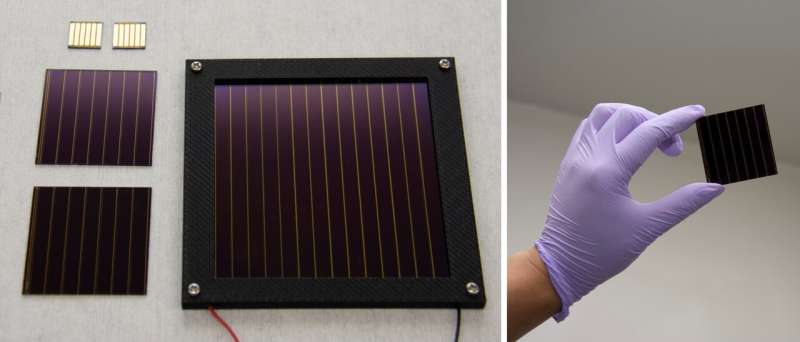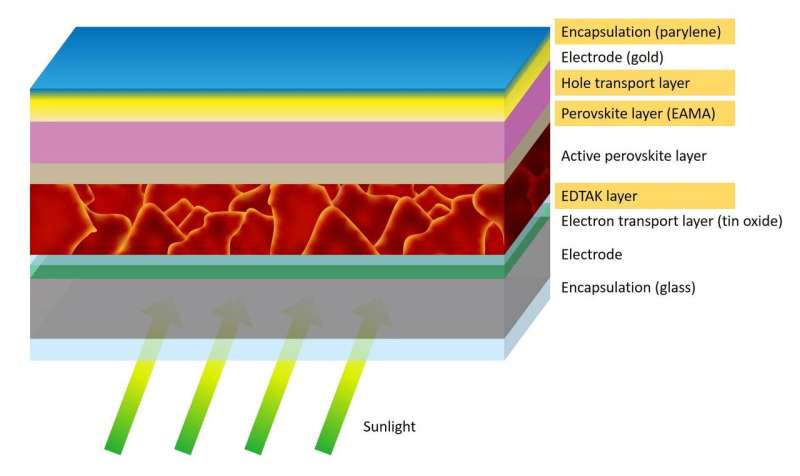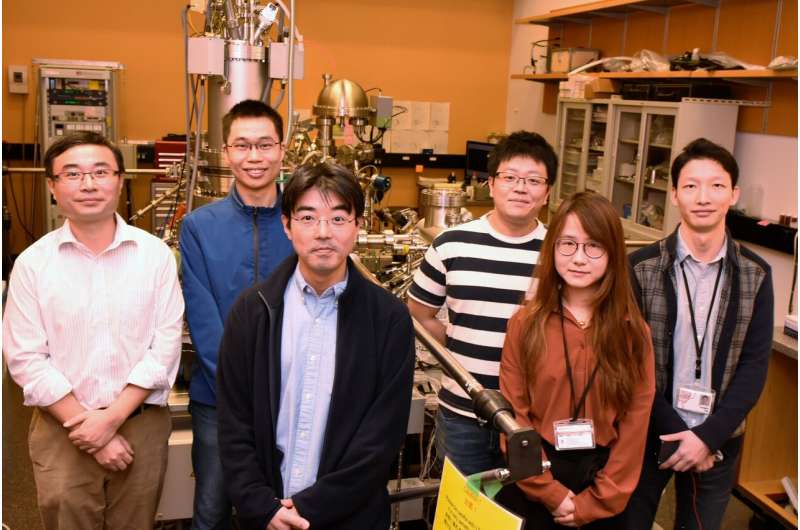Scientists boost stability and efficiency of next-gen solar tech

Researchers from the Okinawa Institute of Science and Technology Graduate University (OIST) have created next-generation solar modules with high efficiency and good stability. Made using perovskites, these solar modules can maintain high performance for over 2000 hours. Their findings, reported 20 July 2020 in Nature Energy, have brightened prospects of commercialization.
Perovskites have the potential to revolutionize the solar technology industry. Flexible and lightweight, they promise more versatility than the heavy and rigid silicon-based cells currently dominating the market. But scientists must overcome some major hurdles before perovskites can be commercialized.
"There are three conditions that perovskites must meet: They must be cheap to produce, highly efficient and have a long lifespan," said Professor Yabing Qi, head of the OIST Energy Materials and Surface Sciences Unit, who led this study.
The cost of making perovskite solar cells is low, as the cheap raw materials require little energy to process. And in just over a decade, scientists have made huge strides in improving how effectively perovskite solar cells convert sunlight to electricity, with efficiency levels now comparable to those of silicon-based cells.
However, once scaled up from tiny solar cells to larger solar modules, the efficiency levels of perovskites plummet. This is problematic, as commercial solar technology needs to remain efficient at the size of solar panels, several feet in length.
"Scaling up is very demanding; any defects in the material become more pronounced so you need high-quality materials and better fabrication techniques," explained Dr. Luis Ono, a co-author of this study.
The instability of perovskites is another key issue under intense investigation. Commercial solar cells need to be able to withstand years of operation but currently, perovskite solar cells degrade quickly.

Building up the layers
Professor Qi's team, supported by the OIST Technology Development and Innovation Center's Proof-of-Concept Program, addressed these stability and efficiency issues using a new approach. Perovskite solar devices are made up of multiple layers—each with a specific function. Instead of focusing on just one layer, they looked at the overall performance of the device and how the layers interact with one another.
The active perovskite layer that absorbs sunlight lies in the center of the device, sandwiched between the other layers. When photons of light strike the perovskite layer, negatively charged electrons harness this energy and "jump" to a higher energy level, leaving behind positively charged "holes" where the electrons used to be. These charges are then diverted in opposite directions into electron and hole transport layers above and below the active layer. This creates a flow of charge—or electricity—that can leave the solar device via electrodes. The device is also encapsulated by a protective layer that reduces degradation and prevents toxic chemicals from leaking into the environment.
In the study, the scientists worked with solar modules that were 22.4 cm2.
The scientists first improved the interface between the perovskite active layer and the electron transport layer by adding a chemical called EDTAK between the two layers. They found that EDTAK prevented the tin oxide electron transport layer from reacting with the perovskite active layer, increasing the stability of the solar module.
The EDTAK also improved the efficiency of the perovskite solar module in two ways. First, potassium in the EDTAK moved into the active perovskite layer and "healed" tiny defects on the perovskite surface. This prevented these defects from trapping the moving electrons and holes, allowing more electricity to be generated. The EDTAK also increased performance by enhancing the conductive properties of the tin oxide electron transport layer, making it easier to collect electrons from the perovskite layer.
The scientists made similar improvements to the interface between the perovskite active layer and the hole transport layer. This time, they added a type of perovskite called EAMA between the layers, which enhanced the ability for the hole transport layer to receive holes.

The EAMA-treated device also showed better stability under humidity and temperature tests. This was due to how the EAMA interacted with the surface of the perovskite active layer, which is a mosaic of crystal grains. In solar devices without EAMA, the scientists saw that cracks formed on the surface of the active layer, which originated from the boundaries between these grains. When the scientists added EAMA, they observed that the additional perovskite material filled the grain boundaries and stopped moisture from entering, preventing these cracks from forming.
The team also modified the hole transport layer itself by mixing in a small amount of polymer called PH3T. This polymer boosted moisture resistance by providing the layer with water-repellant properties.
The polymer also solved a major issue that has previously hampered improvements to long-term stability. The electrode on top of the perovskite solar module is formed from thin strips of gold. But over time, tiny gold particles migrate from the electrode, through the hole transport layer and into the active perovskite layer. This irreversibly impairs performance of the device.
When the researchers incorporated PH3T, they found that the gold particles migrated into the device more slowly which significantly increased the module's lifespan.
For their final improvement, the scientists added a thin layer of the polymer, parylene, in addition to glass, to provide a protective coating to the solar module. With this added protection, the solar modules maintained about 86% of their initial performance, even after 2000 hours of constant illumination.
In collaboration with Dr. Said Kazaoui at National Institute of Advanced Industrial Science and Technology (AIST), the OIST team tested the improved solar modules and obtained an efficiency of 16.6%—a very high efficiency for a solar module of that size. The researchers now aim to carry out these modifications on larger solar modules, leading the way towards the development of large-scale, commercial solar technology in the future.
More information: A holistic approach to interface stabilization for efficient perovskite solar modules with over 2,000-hour operational stability, Nature Energy (2020). DOI: 10.1038/s41560-020-0653-2



















